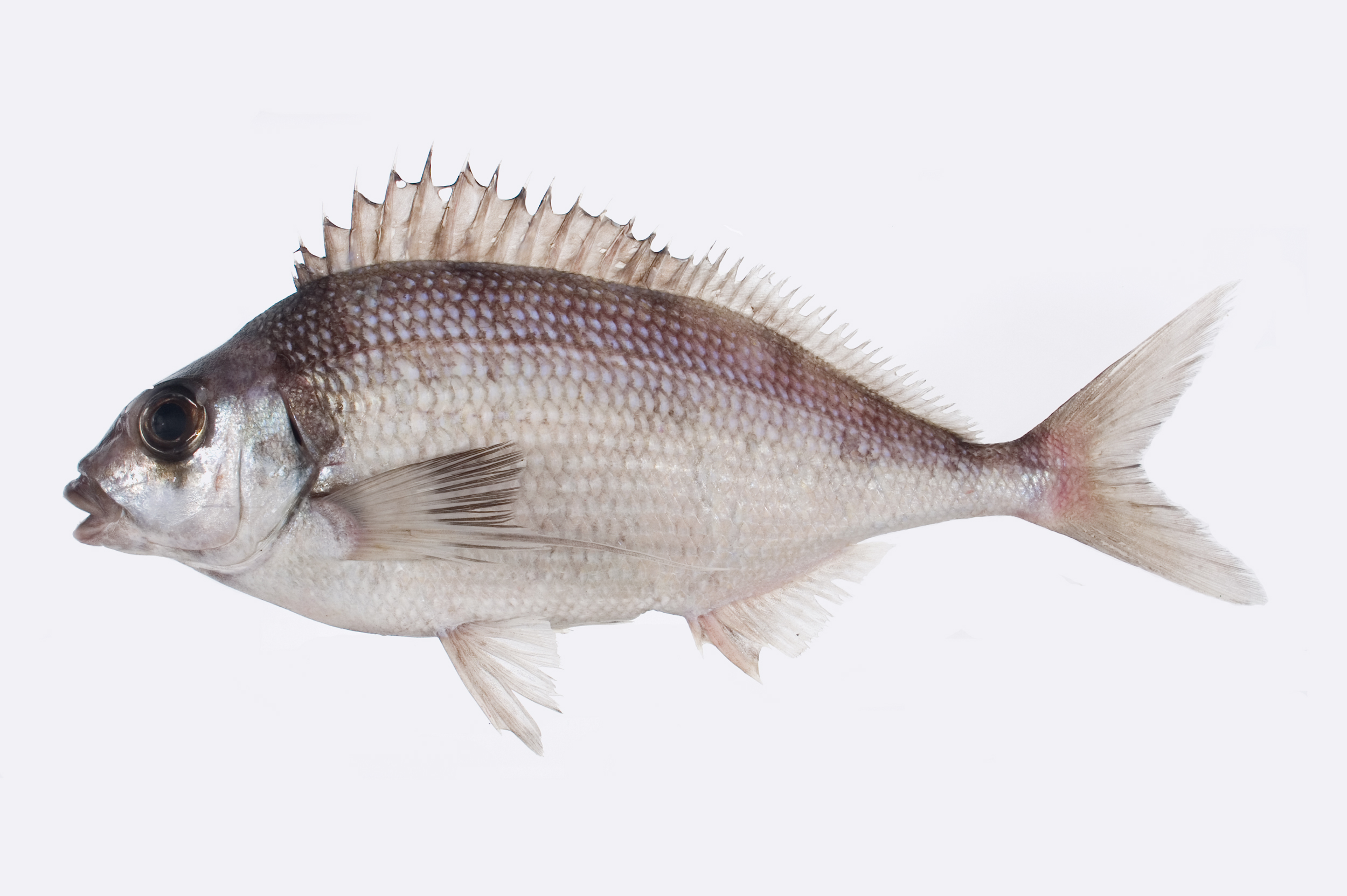King Tarakihi, Nemadactylus sp.
Other Names: King Terakihi

A King Tarakihi, Nemadactylus sp, from the Tasman Sea. Source: NORFANZ Founding Parties. License: All rights reserved
Summary:
A greyish-brown morwong with a broad v-shaped saddle across the nape that extends across to below the anterior 3-5 dorsal-fin spines and ventrally to the pectoral-fin base, and pale pectoral fins with a distinct broad black margin. Juveniles have 3-4 faint darkish bands along the back, and a pearly-blue spot on each scale forming narrow lines along the side.
The pale pectoral fins with broad black margins are diagnostic.
The pale pectoral fins with broad black margins are diagnostic.
Cite this page as:
Bray, D.J. 2019, Nemadactylus sp. in Fishes of Australia, accessed 02 Jul 2025, https://fishesofaustralia.net.au/home/species/5492
King Tarakihi, Nemadactylus sp.
More Info
|
Distribution |
Inhabits offshore ridges and rises in the Tasman Sea, including southeastern Australia off New South Wales, on the Lord Howe Rise and Norfolk Island. Elsewhere the species occurs on the West Norfolk Ridge, and in New Zealand from the Kermadec Islands, south to Gisbourne. |
|
Features |
Dorsal fin XVII-XVIII, 25-28; Anal fin III, 11-13; Pectoral fin 14-16 (6-7 branched rays + 6-7 thickened unbranched rays); Lateral line scales 55-63. Body depth 32-42% SL; dorsal profile of head slightly concave; dorsal fin long-based with a small notch between the spinous and soft portions; first unbranched pectoral-fin ray thickened, greatly prolonged, free from membrane and extending to base of anal-fin ray 1-5. Body scales cycloid, moderate in size, with a scaly sheath of smaller scales on the dorsal and anal-fin bases; suborbital area naked, preopercular area mostly naked except for several rows of scales ventrally on margin. |
|
Colour |
A greyish-brown morwong becoming pale below, with silvery sides, an indistinct blackish band across the interorbital area that extends slightly below the eye, a broad v-shaped saddle across the nape that extends to below the anterior 3-5 dorsal-fin spines and to the pectoral-fin base, and pale pectoral fins with a distinct broad black margin. Juveniles have 3-4 faint darkish bands along the back, and a pearly-blue spot on each scale forming narrow lines along the side. |
|
Fisheries |
Taken by recreational and commercial fishers in New Zealand, and occasionally by recreational fishers in the Australian EEZ. |
|
Remarks |
Although Roberts (2015) refers to this species as Nemadactylus rex, the species is yet to be formally described, so this name is invalid. |
|
Similar Species |
Differs from the very similar Jackass Morwong, Nemadactylus macropterus, in having pale pectoral fins with a broad blackish margin. King Tarakihi also grow to a larger size that the Jackass Morwong. |
|
Author |
Bray, D.J. 2019 |
King Tarakihi, Nemadactylus sp.
References
Bruce, B.D., Bradford, R., Daley, R., Green, M. & Phillips, K. 2002. Targeted Review of Biological and Ecological Information from Fisheries Research in the South East Marine Region. Final Report to the National Oceans Office. CSIRO Marine Research, Hobart. Available from: https://www.environment.gov.au/system/files/resources/c1a527fa-4007-4ebc-86d8-0773484c6457/files/se-fisheries.pdfAccessed 13 December 2018
Francis, M.P. 1991. Additions to the Fish Faunas of Lord Howe, Norfolk, and Kermadec Islands, Southwest Pacific Ocean. Pacific Science 45(2): 204-220 figs 1-44 (as Nemadactylus macropterus)
Francis, M. 1993. Checklist of the coastal fishes of Lord Howe, Norfolk, and Kermadec Islands, southwest Pacific Ocean. Pacific Science 47(2): 136-170 figs 1-2 (as Nemadactylus macropterus)
Roberts, C.D. 2015. 199 Family Cheilodactylidae, pp. 1347-1357, in Roberts, C.D., Stewart, A.L. & Struthers, C.D. (eds) The Fishes of New Zealand. Wellington : Te Papa Press Vol. 4 pp. 1153-1748. (as Nemadactylus rex)
Smith, P.J., Roberts, C.D., McVeagh, S.M. & Benson, P.G. 1996. Genetic evidence for two species of tarakihi (Teleostei: Cheilodactylidae: Nemadactylus) in New Zealand waters. New Zealand Journal of Marine and Freshwater Research 30(2): 209-220 http://dx.doi.org/10.1080/00288330.1996.9516709


